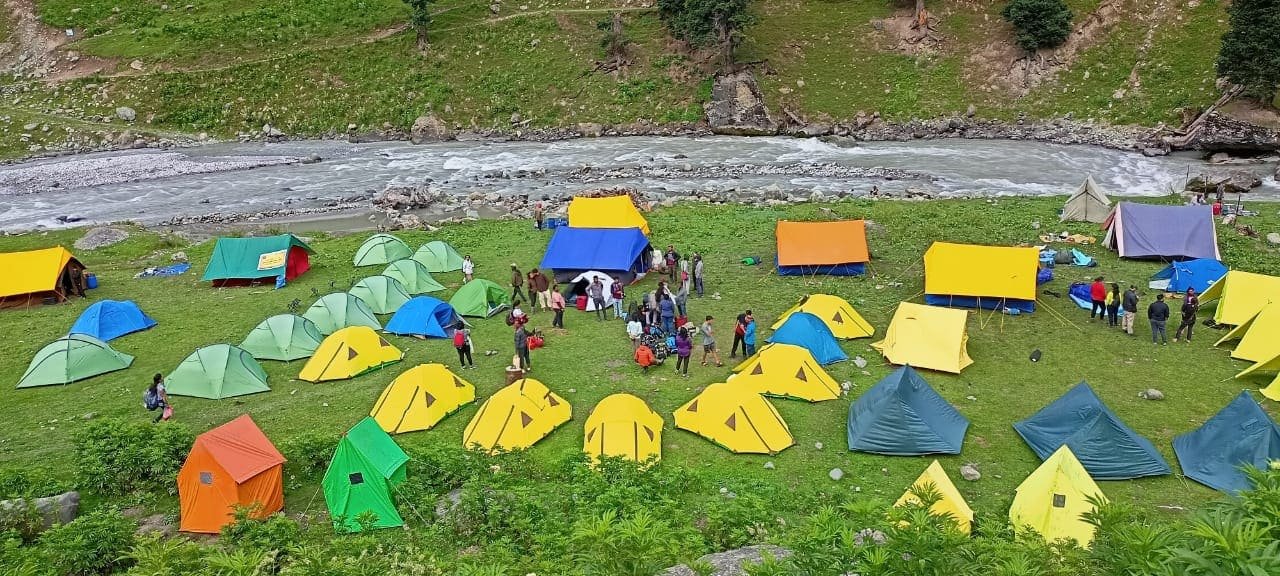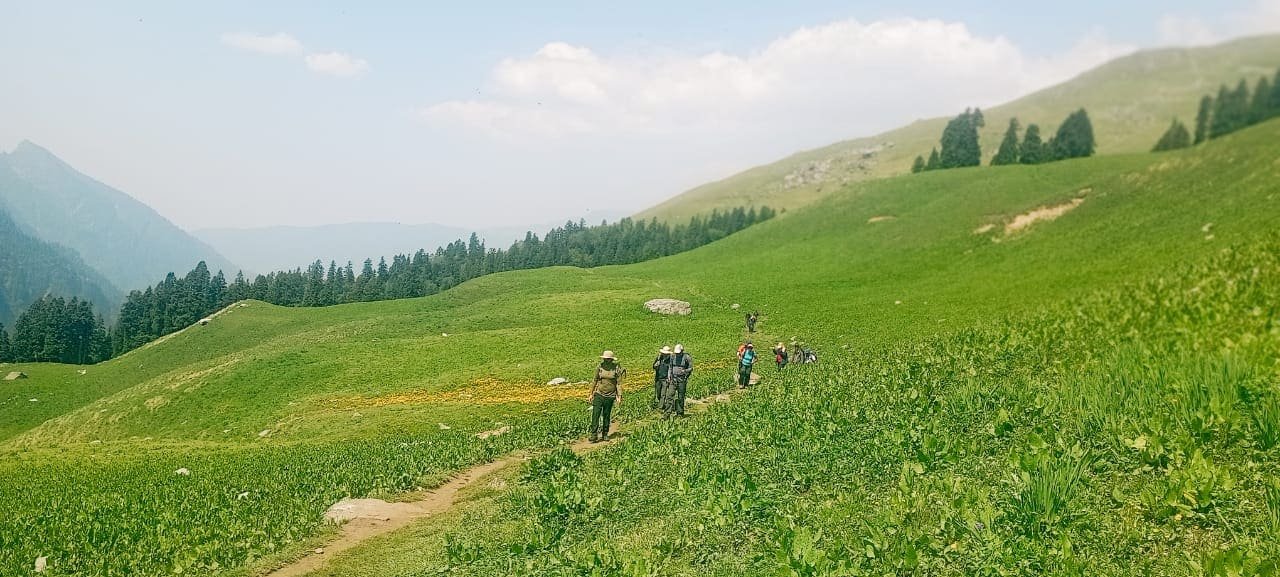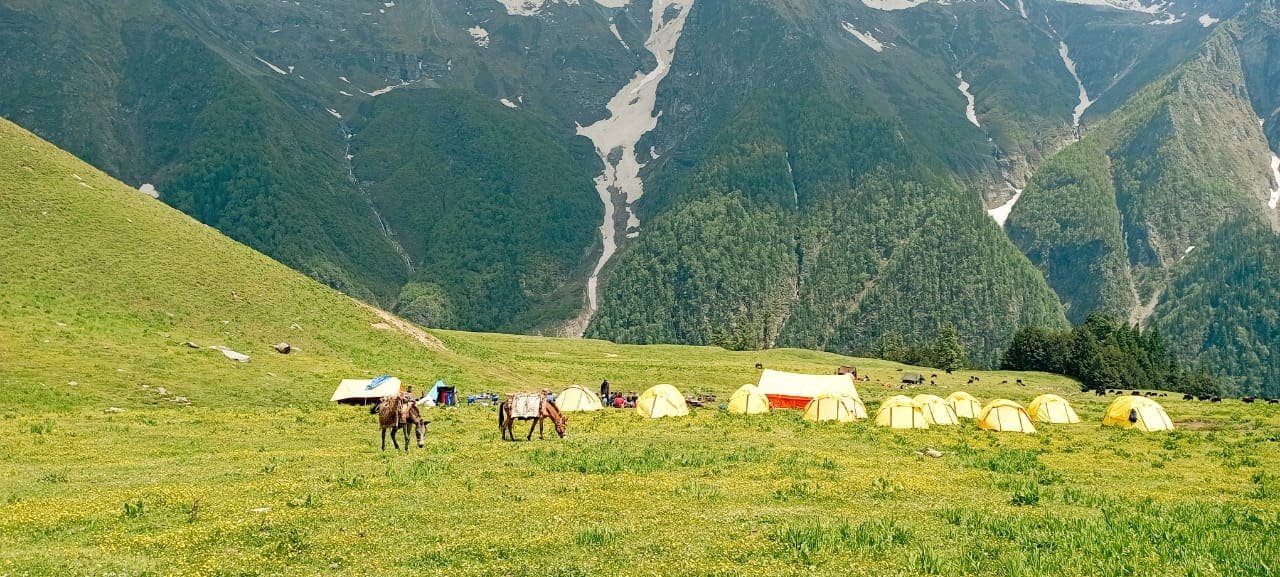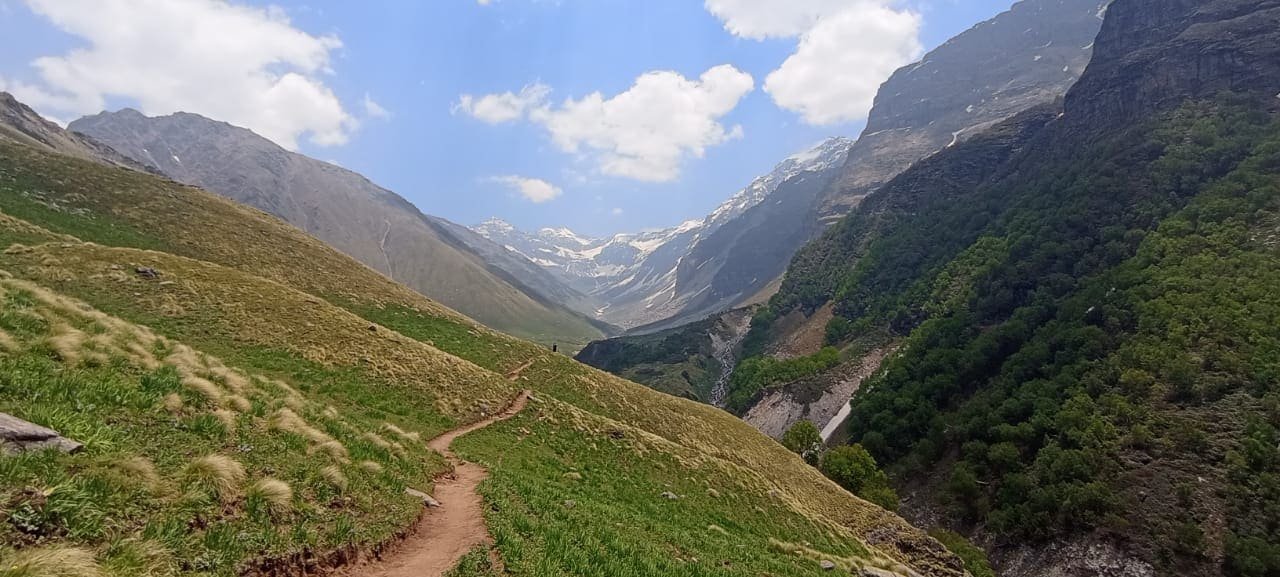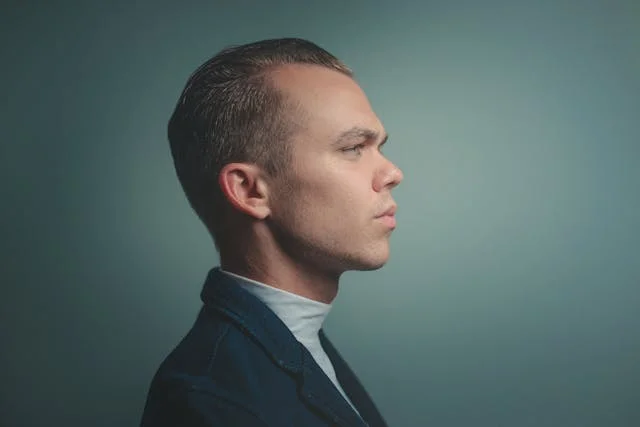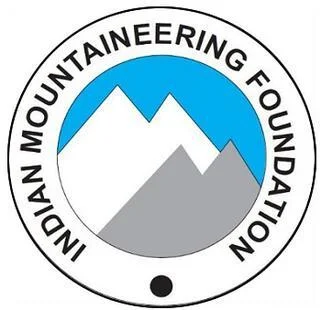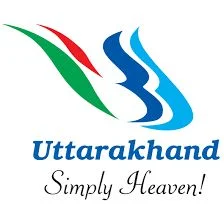Starting From
16,675
14,500.00
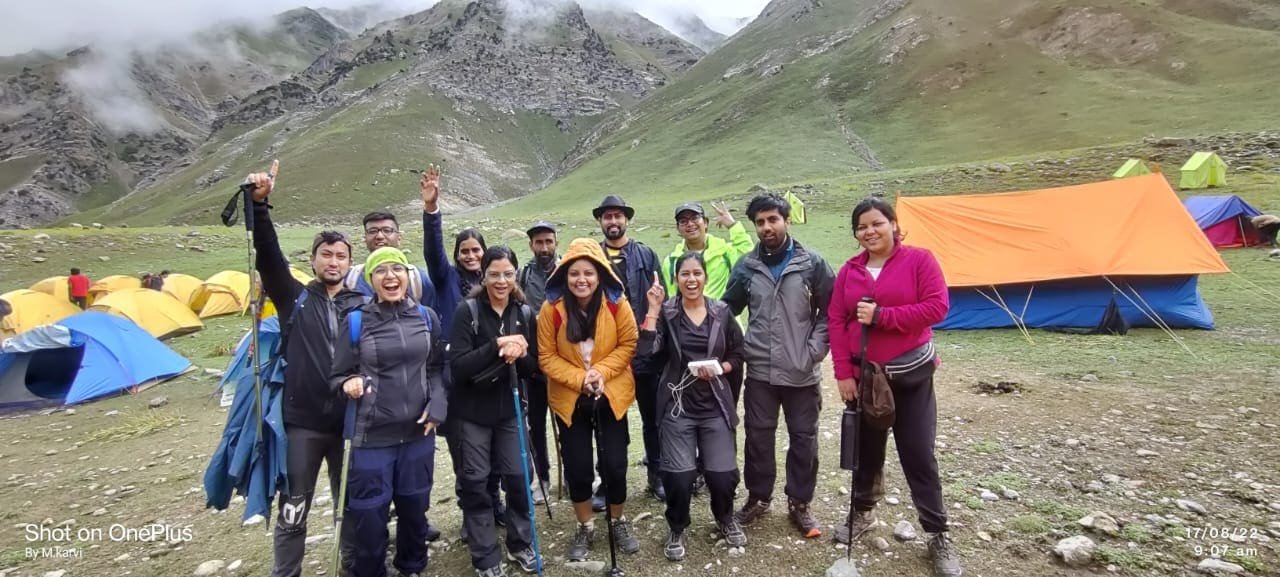
Starting From
16,675
14,500.00
Starting From
16,675
14,500.00
Nafran Valley Trek (326+ Reviews)
One way trail. The trek starts and ends at Aru
Jammu is the nearest rail head to the base camp
Srinagar Airport
Aru
Monsoon Trek ( July - August)
Aru to Aru
Meals while on trek ( Veg and Egg)
Homestay/ Camping
Jammu and Kashmir
7 days
Moderate
13800 Ft
40 Km
Nafran Valley Trek Overview
Pristine alpine meadows, glacial lakes, dense pine forests and breathtaking views of the snow-capped peaks await you at the Narfan Valley Trek. Located in the scenic region of Kulgam District in South Kashmir, this Valley is an offbeat Himalayan trek that is a perfect alternative to other overcrowded treks in the region. It takes 4 to 5 days to complete the trek and on the way you will get to see the alpine lakes, shepherd trails, wildflowers and views of Mount Kousar.
From the scenic village of Aru you will take the first steps and begin your journey. The first to welcome you will be the dense pine forests, hidden under their shadows ancient streams flow and meadows become playgrounds to the vibrant wildflowers. With each passing day on the trek you find yourself coming closer to the snow-capped peaks like Mount KounsarNag. The trek reaches an altitude of around 11,000 feet making it a moderately challenging trail, this offers a taste of adventure to the trekkers making the trail a memorable experience.
If you're planning trekking in Kashmir, consider this hidden gem before the crowds discover it. The Narfan Valley is not just a destination – it's a journey into the wild soul of Kashmir.
Best Camping Spots Along the Narfan Valley Trek
Narfan Valley Trek is not just a paradise for the trekkers but it also has the most beautiful camping locations, perfect stops where after trekking for a whole day you relax and lay down under the stars. Here are some top camping spots in Narfan Valley that will elevate your trekking experience.
Aru Village – The Base Camp
Altitude: ~7,950 ft
Aru is a well known starting point of many treks in Kashmir, including the Tarsar Marsar Trek. The village is best for preparing for the trek and also gives you a glimpse into the local lifestyle. The village in itself is a peaceful getaway from modern life, the house with sloped roofs and the green valley surrounded with the tall Himalayas are welcoming notes to the surreal scenes ahead.
Gagad Oathri – First Meadow Camp
Altitude: ~9,500 ft
A moderate ascent through the pine and birch forests and you find yourselves among the scenic meadows of Gagad Oathri. This is the first campsite of the trek and here you will find the beautiful expansive vistas of green meadows that seem to be stretching far away into the horizon. The distance peaks and the quiet of the wilderness around you will surely bring you peace and joy.
Narfan Valley – Hidden Gem Campground
Altitude: ~10,800 ft
Narfan Valley is the heart of this trek, this place is known for its vast alpine pasture, wildflowers and complete solitude. The Valley is still lesser known, so you find the place to yourself, with less crowd making this untouched landscape the perfect place to camp. You are likely to see Gujjar and Bakarwal shepherd camps here too.
Harnag Lake – Lakeside High Camp
Altitude: ~11,500 ft
Harnag lake is a facial lake hidden in the Pir Panjal. Camping next to its crystal-clear waters provides a surreal experience. The cold air, and brilliant night skies is the perfect place to spend the night and experience the raw beauty of the remote Himalayas. Due to high altitude and rocky terrain, it’s important to choose a leveled, sheltered spot.
Aram Pathri – Forest Edge Retreat
Altitude: ~9,000 ft
Descending down from the Narfan Valley you find the ideal last night campsite before heading back to civilization. The area is lush, peaceful, and ideal for a relaxed evening after the tough trek. The forest surrounding this meadow offers shade, privacy, and plenty of firewood for warmth.
Flora and Fauna Of The Narfan Valley Trek
The trails of the Narfan Valley Trek takes you to some of the most ecologically rich and unspoiled regions in Kashmir. This offbeat Himalayan trek is sure to bring delight to someone who loves nature and its gifts.
Flora: From Pine Forests to High Alpine Blooms
The beginning of the trek from Aru winds through dense coniferous forests dominated by Deodar (Himalayan cedar), Kail (Blue Pine), and Fir trees. These trees, green and beautiful, provide home to various animals and plants. They also scent the forest with their unique smell, the sunlight trickles down from their leaves into the ground that you walk on.
From Gagad Oathri and till the Narfan Valley, the land is dotted with lush green meadows and less trees. These meadows called margs can be seen to be bursting with wildflowers in the summer months. Here are some of the wildflowers that you might find:
Primulas: Bright alpine blooms, often purple or yellow, appearing after snowmelt.
Anemones: Delicate petals, bloom in clusters, thrive in cool alpine meadows.
Blue Poppies: Rare Himalayan flower, electric blue, grows in moist shaded slopes.
Rhododendrons: Vibrant shrubs, red or pink flowers, bloom along forest edges.
Gentians: Star-shaped blue flowers, low-growing, common near alpine water sources.
Edelweiss (Rare): Woolly white flower, grows on rocks, symbolizes alpine purity and resilience.
In June and July, these flowers bloom in vibrant colors, turning the landscape into a Himalayan wonderland. The reds, purples, blues, and yellows of these wildflowers are a visual treat to the botanists and the photographers alike.
Near the Harnag Valley the landscape becomes more barren, here you will find hardy grasses and lichens. These high-altitude plants survive extreme cold and help prevent soil erosion on the slopes.
Fauna: A Glimpse Into Kashmir’s Wild Side
The remote land of the Narfan Valley Trek is where exotic animals hide. Keep your eyes and ears open for wildlife sightings. While spotting large mammals is rare, trekkers have reported sightings of:
Himalayan Marmots – Seen sunbathing on rocks in Narfan Valley
Red Foxes – Occasionally seen near treelines at dawn
Musk Deer – Shy and elusive, often spotted in thick undergrowth
Snow Leopards – Rarely seen but known to inhabit the upper Pir Panjal range
Himalayan Black Bear – Prefers forested areas near Aru and Gagad Oathri
Birdlife
This trail is also a paradise for bird watchers. Commonly sighted species include:
Himalayan Monal (the state bird of Himachal Pradesh)
Koklass Pheasant
Golden Eagle
Bearded Vulture (Lammergeier)
Himalayan Griffon
Their presence, especially in open valleys like Narfan, adds an exciting dimension to the trek.
Whether you're a naturalist, photographer, or simply a curious traveler, the Narfan Valley trek offers a rare chance to explore the biodiversity of Kashmir’s high-altitude ecosystems. With every step, you walk through an evolving landscape filled with life—sometimes seen, sometimes hidden—but always thriving.
Best Time to Visit the Narfan Valley Trek
The Narfan Valley Trek in Kashmir offers a unique Himalayan experience, best enjoyed during the summer and early autumn months. Choosing the right time to visit ensures safe trekking conditions, breathtaking scenery, and an unforgettable adventure.
June to Early July: Blooming Meadows and Fresh Trails
The snow begins to melt as June begins and vibrant alpine flowers start blooming. Alpine meadows fill with wildflowers like primulas, anemones, blue poppies, gentians, and rare edelweiss. Along with this the crisp air and the river streams bring a new life to the valley. The butterflies and the birds hop from flower to flower and tree to tree in search of food and shelter, many animals and insects come out of their winter hibernation during this time, the valley is filled with colors and sounds of different kinds. Early summer provides excellent opportunities for photography and birdwatching. Temperatures are mild, averaging between 10°C and 20°C, making hiking comfortable. However, some higher passes may still have patches of snow, so preparedness is essential.
Mid-July to August: Peak Trekking Season
This is the most popular period for the Narfan Valley Trek. The weather is generally stable with clear skies, longer daylight hours, and warmer temperatures, often reaching 20°C to 25°C during the day. Shepherds and their flocks, especially the Gujjars and Bakarwals, migrate to the high meadows, this gives you a chance to interact with these people leading a unique life for ages. Campsites near Harnag Lake and Narfan Valley are accessible and pleasant. The moderate climate and scenic diversity make this period ideal for both novice and experienced trekkers.
September: Crisp Air and Autumn Colors
September offers cooler temperatures and thinner crowds. The meadows lose their wildflower blooms but transform into golden landscapes dotted with autumn foliage. Clear, blue skies and fresh air make it perfect for peaceful trekking and stargazing. However, early snowfall may begin toward the end of the month.
When to Avoid
From October to May, heavy snowfall blocks trails, making the trek dangerous and often impossible. The winter months are harsh, with freezing temperatures and deep snow, unsuitable for most trekkers.
Choosing the right season enhances the Narfan Valley trek experience, blending nature’s best with safe trekking conditions.
Gujjar and Bakarwal: A Unique Cultural Experience on the Narfan Valley Trek.
One of the most enriching experiences of the Narfan Valley Trek is the opportunity to encounter with the Gujjar and Bakarwal communities—nomadic pastoralists who have lived in the Kashmir Himalayas for centuries. The people of these tribes still follow the trade of their ancestors, continuing an age-old tradition. They move their flocks of sheep, goats, and horses between winter settlements in the plains and summer pastures like those in Narfan Valley.
Trekking on these trails offer a look into the past and shows the ancient way of life that still survives. Their camps are simple and made of wool and animal hides, inside these warm tents they carry on their daily activity of milking animals, weaving wool, and cooking traditional meals like “makki di roti” and salted butter tea.
The Gujjars and Bakarwals are known for their warm hospitality, often inviting trekkers to share tea or stories by the fire. Through these interactions, visitors learn about their customs, folklore, and the challenges of sustaining a nomadic lifestyle in a rapidly changing world.
This cultural immersion adds depth to the trek, transforming it from a mere hiking expedition into a journey through living traditions—where nature and culture coexist in delicate harmony.
Nafran Valley Trek Itinerary
Scenic drive through the Lidder Valley
Pass through Pahalgam and picturesque Kashmiri countryside
Arrive at the charming alpine village of Aru
Rest and acclimatize in a peaceful mountain setting
Short Itinerary:
Drive Distance: 112 km / Time: 4 Hours / Altitude: 2,400 m (7,950 ft)
Detailed Itinerary:
We start our excursion from Srinagar and drive for 112 km to arrive at Aru.
From Srinagar, we will head to Pahalgam which is at a distance of 100 km, and then to Aru which lies 12 km from Pahalgam. Aru is a beautiful village, surrounded with green hills and situated on the bank of the Lidder Stream, the village is also the base camp for other famous treks like the Tarsar Marsar Trek and the Kolahoi Glacial mass Trip. It is additionally a center for experience exercises like pony riding and heliskiing in winter. Trout fishing in the Lidder Stream is likewise a famous game here.
You will stay in camps at Aru for the night, in a delightful area by the Lidder Waterway.
Begin trek through dense pine and deodar forests
Gradual ascent into open highland pastures
Enjoy meadows, wildflowers, and the sounds of nature
Camp in a secluded and scenic grassland
Short Itinerary:
Trek Distance: ~8 km / Time: 5 Hours / Altitude: 2,910 m (9,547 ft)
Detailed Itinerary:
Today we will trek from Aru to Gagad Pathri. The journey begins with a delicate uphill trip, after walking for around 800 meters, you will enter a forested zone. Keep walking and after some time the trail forks into two. The left path leads you to a clearing with a vantage point. Reaching there takes around 3 hrs. The path to the right, leads us to our camping area.
After turning to the right you will find that the trail to the camp is muddy and requires care to walk, a wrong step can make you slip and can cause you injury. You will climb uphill for 500 meters and arrive at a shepherd settlement called Geerwad. From here on, you walk on the fields and woods covering the whole, until you reach a little riverside clearing. This is Gagad Pathri, your camping area for the evening. After a good dinner, you will resign to your tents to rest for the evening and wake up energised the following day for the trip.
Trek through varied landscapes including ridges and rocky sections
Cross remote shepherd settlements along the way
Reach the pristine alpine expanse of Narfan Valley
Set up camp surrounded by snow-covered peaks
Short Itinerary:
Trek Distance: ~13 km / Time: 9 Hours / Altitude: 3,435 m (11,270 ft)
Detailed Itinerary:
On the third day we will begin our journey by crossing a wooden board bridge to get to the right half of the waterway followed by another intersection that will again take you to the left half of the stream. Here, you will notice several mud cottages that act as the mid-year abodes of the shepherds. This clearing is called Kansal Pathri.
Continue your uphill walk along the edge to your left till you reach Aaram Pathri.
At Aaram Pathri, you need to take one more edge to your right side to show up at Nafran Valley. The path to Nafran Valley is steep and a blend of progressive rises through gigantic stones and shakes. Tread carefully here as certain segments can be difficult.
After climbing through the rugged terrain for some time you will find a delightful stream, This is where Nafran Valley begins. As you climb further ahead, the path opens into a dazzling meadow with lovely stone huts and a natural stream going in between. This is where we camp for the evening. The camping area is surrounded by enormous mountains on three sides making it a great area to camp. Absorb the landscape of the lovely Nafran Valley and resign during the tents for the evening.
Optional acclimatization hike to glacier-fed Harnag Lake
Explore meadows filled with wildflowers
Enjoy panoramic views from Harnag Pass
Return to camp for rest and recovery
Short Itinerary:
Trek Distance (optional): ~6–7 km round trip / Time: 4–5 Hours / Altitude (Lake): ~3,700 m
Detailed Itinerary:
After three consecutive days of trekking and steadily gaining altitude, Day 4 is designed as a crucial rest and acclimatization day at Narfan Valley. Nestled at over 3,400 meters, this vast alpine basin provides the perfect setting to let your body adjust to the thin air, while still offering optional exploration for those feeling fit and adventurous.
The highlight of the day is a side hike to Harnag Lake, a serene glacial lake hidden above the valley floor. The trail follows a gradual but steady ascent through boulder-strewn meadows and high-altitude wildflower fields, leading to Harnag Pass, which offers sweeping views of snow-capped ridgelines and the lake below.
The lake itself is pristine and untouched, with crystal-clear turquoise water surrounded by rock walls and alpine vegetation. It’s a perfect spot for quiet reflection, photography, or simply soaking in the raw Himalayan beauty.
After spending some time at the lake, you’ll descend back to Narfan Valley, where the rest of the afternoon can be spent relaxing at camp, stretching, or enjoying warm meals. This day plays a key role in preparing your body for the remaining journey, especially since you’ve now reached some of the highest elevations of the trek.
Gentle descent through open meadows and forested trails
Arrive at the peaceful and quiet campsite of Aaram Pathri
Relax by the river and enjoy solitude
Short Itinerary:
Trek Distance: ~2.5 km / Time: 2 Hours / Altitude: 3,120 m (10,236 ft)
Detailed Itinerary:
The fifth day is simple in contrast to the earlier days. You have done the hardest piece of your trip, now the way to Aaram Pathri is easy on your feet and you get to stroll with ease looking around at the beautiful sceneries.
We will camp at Aaram Pathri around evening time. Take this time to explore the surrounding area. The stroll down will be really gentle on your legs. Aaram Pathri Campground is a delightful camping area on a huge knoll that offers a mind blowing scenery of normal excellence. The nightfall over the Bhoj and Deodar trees makes the brilliant hour look totally supernatural here. Rest well after a delectable supper at the camping area.
Trek through rolling pastures and alpine forest
Experience a blend of open ridges and shaded woods
Camp in a quiet clearing near pine-covered slopes
Short Itinerary:
Trek Distance: ~11 km / Time: 5–6 Hours / Altitude: 2,800 m (9,186 ft)
Detailed Itinerary:
Today we will trek from the Aaram Pathri camping area to the Bhaj Margi campground. From the camping area, head towards the edge on the south. The path here is steep and goes through growth and trees and there are patches of free soil, rock, and rugged rocks to a great extent before you arrive at the highest point of the edge. You get to see a dazzling view of the valley underneath you. From here on the path turns out to be downhill towards a knoll (a very little meadow hill). Follow down the slanted meadow heading in a southwest direction and afterward along an edge that heads towards the southeast, this will lead you to your next campground Bhaj Margi.
Bhaj Margi is another huge meadow glade like Aaram Pathri that has shepherd cottages all around it. On the southeastern side of your camping area, there is a little stream and a bigger one in the far east corner. Both of these can be utilized as water sources. We will track down a reasonable spot to set up our shelters for a short term visit.
Final descent through beautiful highland scenery
Reach the roadhead at Mondlan and drive to Srinagar
End of the trek journey with memories of untouched Kashmir
Short Itinerary:
Trek Distance: ~6 km / Time: 3–4 Hours
Drive Distance: 112 km / Time: 4 Hours / Altitude (Aru): 2,400 m
Detailed Itinerary:
An easy and gentle walk down to the valley. Expect to reach Srinagar by 8:00 PM.
This is the last day of trekking in the mountain and furthermore the last day of this wonderful excursion. Today we will trek back from Bhaj Margi to Aru and drive back to Srinagar. From the campground, the path continues to go southwest until you arrive at an enormous wooden entryway, which denotes the end of the path.
Follow a sloppy way through a woodland cover right down to a little shepherd settlement called Shul Margi. From Shul Margi, you should cross a little stream to move further downwards and afterward again you should cross a greater stream and go into a forested zone. The timberland runs lined up with the street that drives you to Aru.
Yet, we will progress forward with this forested path and it will lead us into a major spot that offers a surreal perspective of Pahalgam. From here, it is a short plunge to Mondlan town arranged next to a little mountain stream. Mondlan is 8 km away from Aru and it takes a drive of around 20 minutes to arrive at Aru. We will eat subsequent to arriving at Aru and afterward head on towards Srinagar. From Aru is a 112 km distance to Srinagar and we will again pass through the very panoramic detour that we came on the principal day to arrive at Srinagar. You can hope to arrive at Srinagar by 8:00 PM.
Nafran Valley Trek Map

Inclusions
Exclusions
Inclusions
1. Meals while on trek (Veg. + Egg).
2. All necessary entry fees and permits.
3. Accommodation: - Guest house, Home stay, camping during Trek.
4. Mountaineering qualified & professional trek Leader, guide, cook and Support staff.
5. First aid medical kits, stretcher and oxygen cylinder.
6.Trek equipment: Sleeping bag, mattress, tent, kitchen & dinning tent, toilet tent, utensils and crampon (if required)
7. Staff Insurance.
8. Porters/mules to carry central equipment.
1. Any kind of personal expenses.
2. Food during the transit.
3. Mules or porter to carry personal luggage.
4. Insurance.
5. Transport (Non Ac)
6. Any kind of emergency evacuation charges
7. 5% GST
8.Any expense incurred or loss cost by reasons beyond our control such as bad weather, natural calamities (landslides, floods), flight delays/rescheduling/ cancelations, any accidents/medical evacuations, riots/strikes/war/pandemics etc.
9. Anything not specifically mentioned under the head.
Inclusions
1. Meals while on trek (Veg. + Egg).
2. All necessary entry fees and permits.
3. Accommodation: - Guest house, Home stay, camping during Trek.
4. Mountaineering qualified & professional trek Leader, guide, cook and Support staff.
5. First aid medical kits, stretcher and oxygen cylinder.
6.Trek equipment: Sleeping bag, mattress, tent, kitchen & dinning tent, toilet tent, utensils and crampon (if required)
7. Staff Insurance.
8. Porters/mules to carry central equipment.
1. Any kind of personal expenses.
2. Food during the transit.
3. Mules or porter to carry personal luggage.
4. Insurance.
5. Transport (Non Ac)
6. Any kind of emergency evacuation charges
7. 5% GST
8.Any expense incurred or loss cost by reasons beyond our control such as bad weather, natural calamities (landslides, floods), flight delays/rescheduling/ cancelations, any accidents/medical evacuations, riots/strikes/war/pandemics etc.
9. Anything not specifically mentioned under the head.
What to carry
- Trekking shoes: A good pair of trekking shoes is essential for a comfortable and safe trek. Look for shoes that are sturdy, provide good ankle support, and have a good grip on different types of terrain.
- Backpack with rain cover (50-60 ltr): A backpack is necessary to carry all your gear. Make sure it's the right size for your trek, and comes with a rain cover to keep your belongings dry in case of rain.
- Thermals (upper and lower): Thermals are lightweight and comfortable base layers that help regulate your body temperature in cold weather. Bring both upper and lower thermals to keep warm.
- 3 T-shirts (advisable quick dry): Choose quick-drying T-shirts made from breathable and moisture-wicking materials. This will help keep you cool and dry during your trek.
- 2 trek pants: Choose lightweight and comfortable trek pants that are easy to move in and can dry quickly if wet.
- Jacket (-10 degree): A warm jacket is essential for cold weather. Choose a jacket that is waterproof and windproof, and provides good insulation.
- Fleece or hood (2): Fleece jackets or hoodies are great mid-layer options to keep warm. Bring at least two, as they can also be used as an extra layer at night.
- Sunglasses (UV protected): Protect your eyes from the sun's harmful UV rays with sunglasses that are designed for outdoor activities.
- Sun cap: A sun cap or hat with a brim will protect your face and neck from the sun.
- Hand gloves: Bring a pair of lightweight gloves to keep your hands warm and protected from wind and sunburn.
- Woollen cap: A woollen cap will keep your head and ears warm at night or in cold weather.
- Socks (3 pairs min): Bring at least three pairs of good quality socks that are moisture-wicking and provide good cushioning and support for your feet.
- Headlamp: A headlamp will come in handy if you're hiking in low-light conditions or need to find your way in the dark.
- Trekking pole (if needed): Trekking poles can help reduce strain on your legs and provide additional support on steep terrain.
- Rain cover\poncho: A rain cover or poncho will keep you and your gear dry during unexpected rain showers.
- Day pack (if you plan to offload your bag): If you plan to offload your backpack during the trek, bring a smaller day pack to carry essentials like water, snacks, and a first aid kit.
- A toiletry kit: Bring a small kit with personal hygiene items, such as a toothbrush and toothpaste, wet wipes, hand sanitizer, and toilet paper.
- Lunchbox, cup, spoon: If you plan to bring your own food, bring a lunchbox, cup, and spoon to carry and eat your meals.
- 2 one-litter bottles: Staying hydrated is crucial, so bring at least two one-liter bottles to carry water.
- 2-3 plastic covers to keep your wet or used clothes: Plastic bags are useful for keeping wet or dirty clothes separate from the rest of your belongings. They can also be used to pack out any trash or waste you generate during the trek.
How to reach
Reaching Srinagar:
By Train:
From Delhi:
Board the Jammu Rajdhani Express (12425) from New Delhi at 4:00 PM, arriving in Jammu the next morning around 6:40 AM. From Jammu, take a taxi or bus to Srinagar, a drive of approximately 7 to 8 hours covering around 270 km.
From Chandigarh:
Take the Shalimar Express (14608) departing Chandigarh at 10:30 PM and reaching Jammu by 8:45 AM. From Jammu, hire a taxi or bus to Srinagar.
By Bus:
From Delhi (ISBT Kashmere Gate):
Overnight Volvo and deluxe buses run regularly to Srinagar, with travel times around 14 to 16 hours.
From Chandigarh:
Frequent direct Volvo and local buses connect Chandigarh to Srinagar, taking about 10 to 12 hours.
From Srinagar to Aru Village:
Distance: Approximately 12 km
Travel Time: Around 40 minutes to 1 hour
Transport: Private taxis, shared cabs, or local buses are available from Srinagar to Aru. The drive takes you through scenic routes alongside the Lidder River, with beautiful views of the surrounding pine and deodar forests.
About Aru Village:
Aru is the primary base for the Narfan Valley trek and offers basic guesthouses, homestays, and small shops for last-minute gear or food supplies. It’s a quiet, picturesque village known for its lush meadows and proximity to trekking trails. From here, the trek to Narfan Valley begins, passing through dense forests, alpine meadows, and traditional shepherd camps.
Additional Notes:
The road to Aru is open year-round, but weather conditions during winter (December to February) may affect accessibility.
Hiring a local taxi from Srinagar to Aru is recommended for comfort and ease, especially if carrying trekking gear.
Aru village serves as a perfect acclimatization spot before starting the trek and offers a glimpse of rural Kashmiri life.
The Narfan Valley Trek starting from Aru village promises an unforgettable journey through some of Kashmir’s most pristine alpine landscapes, combining natural beauty with rich cultural encounters. Proper planning of your travel to Aru ensures a smooth start to this serene adventure.
Fitness and preparation guide for Nafran Valley Trek
The Narfan Valley Trek is a moderately challenging high-altitude trek that demands good cardiovascular fitness, muscular strength, and mental stamina. The trek covers diverse terrain including alpine meadows, rocky trails, and high passes with elevations reaching around 11,000 feet. Although technically moderate, the long daily distances, elevation gain, and remote conditions require solid physical preparation to fully enjoy the journey and stay safe.
1. Cardiovascular Fitness
The trek involves walking 10–15 km daily over 6–10 hours, often on uneven and sloping terrain. Good cardiovascular endurance helps maintain a steady pace, improves oxygen efficiency at altitude, and reduces early fatigue.
Training Steps:
Begin jogging or brisk walking 3–4 times per week, starting at 2–3 km and gradually increasing to 5–7 km over 6–8 weeks.
Incorporate stair climbing or hill walks to simulate elevation gain and build stamina.
2. Leg and Lower Body Strength
With long ascents and descents on rocky and uneven trails, strong leg muscles reduce fatigue and prevent injuries.
Recommended Exercises:
Squats for thigh and hip strength.
Lunges for balance and control on descents.
Step-ups to mimic climbing movements.
Training Tips:
Perform 3 sets of 15–20 reps, 3 times per week.
Add a weighted backpack (5–7 kg) gradually to replicate trekking conditions.
3. Core Conditioning
A strong core supports posture and balance on uneven terrain, especially when carrying a backpack.
Recommended Exercises:
Planks for static core strength.
Russian Twists and Leg Raises for rotational strength.
Bicycle Crunches for endurance.
Training Tips:
Hold planks for 30–60 seconds, progressing as you get stronger.
Do 3 sets of 20 reps of twists or leg raises on each side.
4. Upper Body Strength
While trekking uses legs primarily, carrying a loaded pack for multiple days stresses the shoulders and back. Upper body strength helps maintain good posture and reduce fatigue.
Recommended Exercises:
Push-ups for chest and triceps.
Bodyweight Rows for back and arms.
Dumbbell Shoulder Press for shoulder endurance.
Training Tips:
Aim for 3 sets of 10–15 push-ups and 3 sets of 5–8 rows, 2–3 times weekly.
5. Total Body Conditioning & Cardio
Endurance and agility are key due to long trekking days and varying weather. Full-body workouts improve stamina and recovery.
Recommended Exercises:
Burpees for cardio and strength.
Mountain Climbers for core and leg agility.
Jump Squats for explosive power.
Training Tips:
Do 3 sets of 10–12 burpees and 20–30 mountain climbers, 3–4 times per week.
Include weekend hikes with a loaded backpack (6–8 kg) to simulate trek conditions.
The Narfan Valley Trek is a rewarding adventure through Kashmir’s pristine alpine landscapes. Preparing your body with targeted cardiovascular, strength, and endurance training well before your trek ensures you can fully enjoy this remote, scenic journey while minimizing injury and altitude-related issues.
FAQ
Nafran Valley Trek is a pure summer trek. The trek is inaccessible and not doable during winter, spring or autumn. Owing to its high altitude, the entire trail of Nafran Valley Trek remains under the snow throughout the winter. In Spring, the snow doesn’t melt fully on its trail Towards the start of summers like in May and June, the passes of the trek are still covered in snow which makes the ponies cross them difficult and quite dangerous. The autumn makes this trek difficult because of the drop in temperature which the ponies can’t bear at high altitude, also by the time autumn fully arrives, the grass in the grasslands of Nafran Valley dies down which is the main source of food for the ponies. Hence Nafran Valley is not doable in Winter, Spring, and Autumn. The best months to do this trek are July, August, and September.
Nafran Valley Trek is a moderate to difficult trek. To embark on this trek, you need to have a fair level of fitness. The trek has some steep ascents. It has boulder and rocky sections which one has to maneuver. The toughest ascent is on the day one goes over the famous Harnag Pass which is full of large boulders and gets slippery with the water that runs down over it. For a beginner, this trek will require some pre-trek fitness preparations. Beginners should hit the gym, try cardio and stretching along with moderate to tough squat exercises. The trek will put a strain on our knees and ankles. The main reason for the trek being moderate to difficult is that it gains altitude with a short distance that makes it steeper.
Cancellation policy
Life is unpredictable and we understand sometimes you have to cancel or change your trip dates and it is our endeavour to make it as easy possible for you. However, please understand we plan everything including guide fees, permits, accommodation and ration in advance. Therefore any cancellation means inconvenience and certain losses to the people involved in various stages of programme. Keeping that in mind, our cancellation charges are as below-
Cancellation prior to 30 days from start of the event: Get monetary refund with 15% of cancellation charges on trek fee.
Cancellation between 30 days and 15 days to the start of event: 50% on trek fee is non refundable and the remaining 50 % will be given as cash voucher which is valid for 1 year.
Cancellation less than 15 days to the start of event: No refund.
Please note cancellation will be only accepted by email.
Booking amount is non refundable
Note: The Himalayan Daredevils reserves the right to cancel a programme before departure in the event of logistical problems arriving due to natural calamities, strikes, wars on any other circumstances that makes the event inadvisable. In this case, 50% on trek fee is non refundable and the remaining 50 % will be given as cash voucher which is valid for 1 year.
Itinerary changes & trip delays:
We plan itineraries based on the information at the time of planning and in rare circumstances, there are subject to change. In the event that the itinerary is changes or delayed due to unforeseen circumstances such as bad weather conditions, transportation delays, government intervention, landslides etc. Security concerns and government orders often lead to last-minute cancellations in Jammu & Kashmir. While we make all the preparations to run the trek, we cannot guarantee that the trek will run. If such a situation occurs, we will cancel the trek and our cancellation policy will apply. We will always aim to give you the best experience possible. However The Himalayan Daredevils are not be held responsible for the cost of delay or changes.
Reviews
Why Choose Us
Our Best Performance
50,000+
Trekkers
PAN India Treks
250+
Treks
Professional
and Experienced Staff
Best
Grade Equipment
Well Organised
Trek Itineraries
Related Blogs
Read and get more about our treks
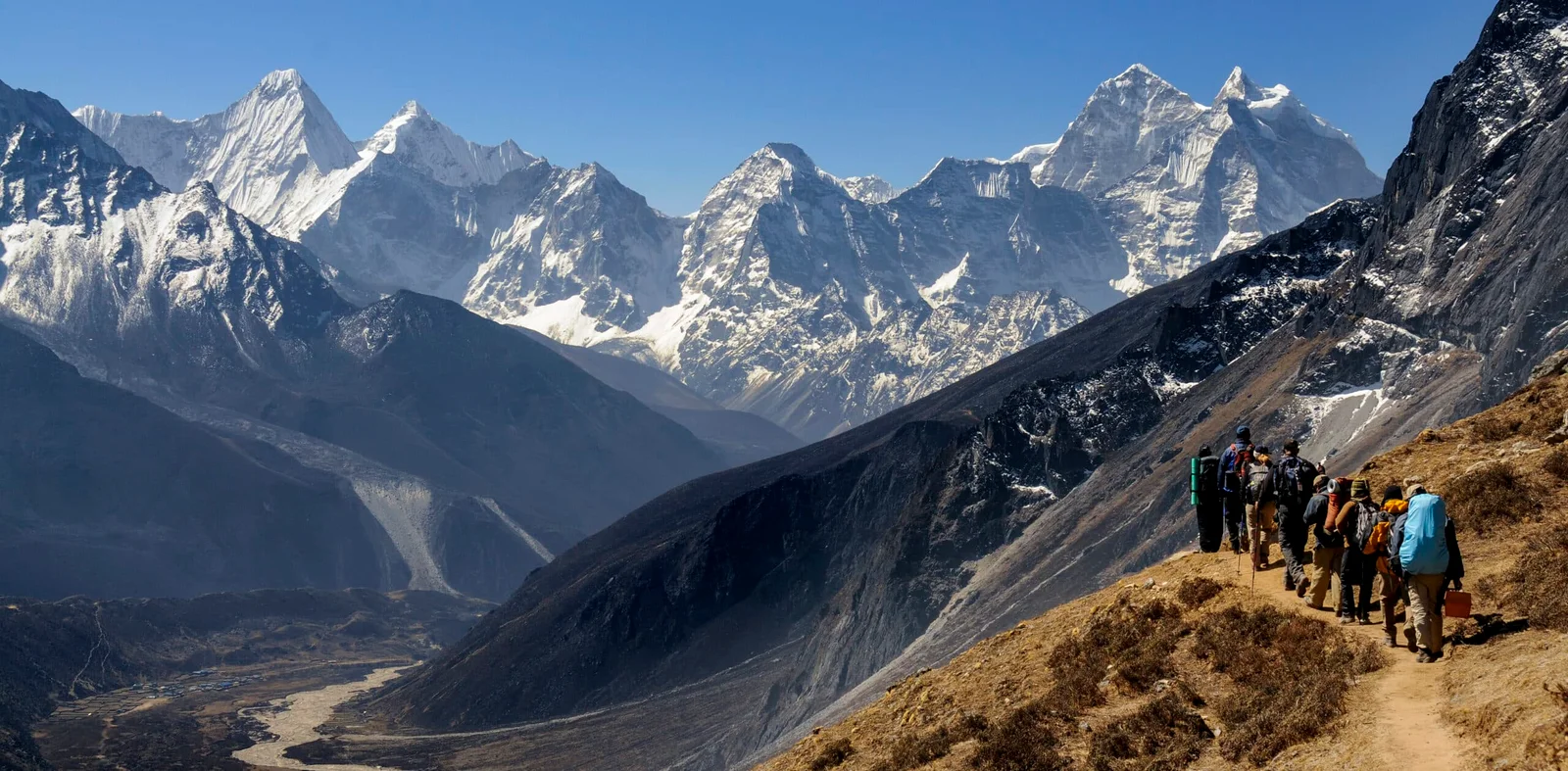
Best Time to do the Har Ki Dun Trek - Himalayan Daredevils
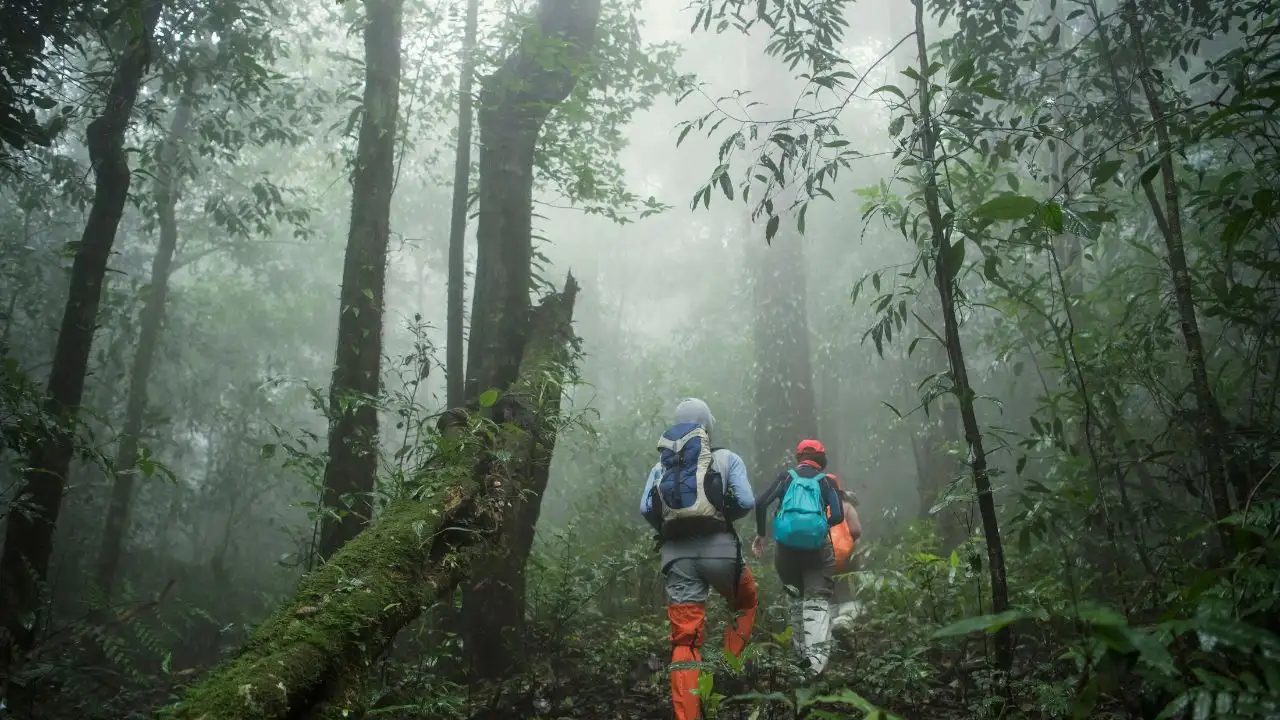
Hampta Pass vs Pin Bhaba Pass: Which Trek to Choose?
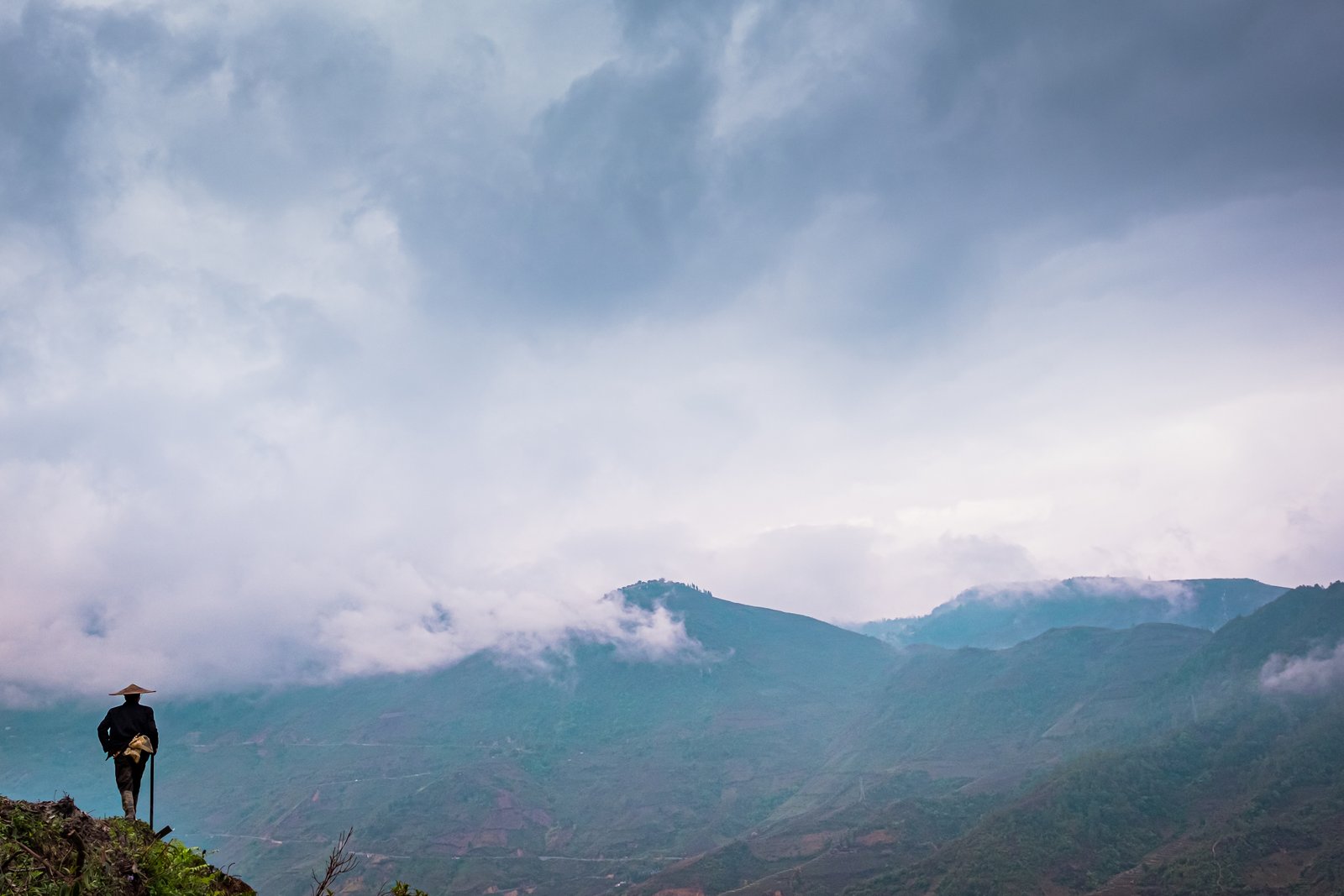
Top 5 Himalayan Monsoon Trek in India
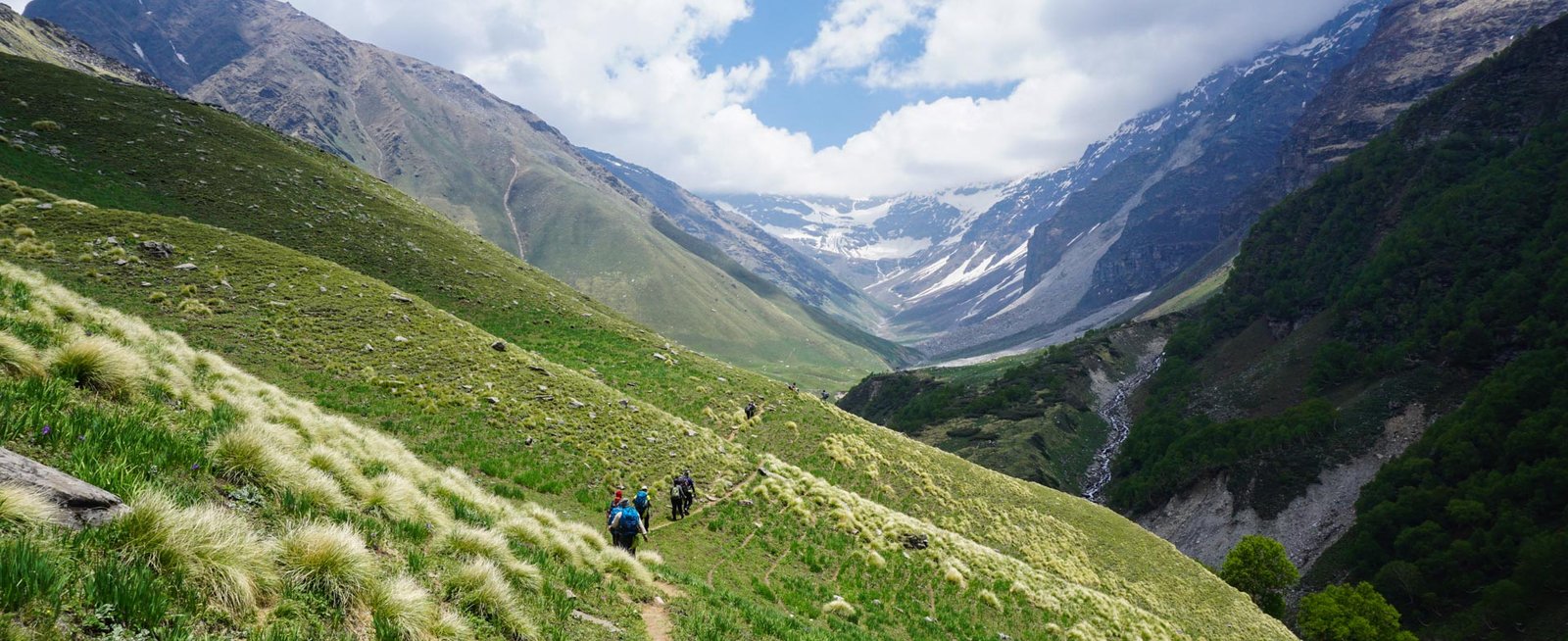
Difficulties of Buran Ghati Trek | Himalayan Daredevils
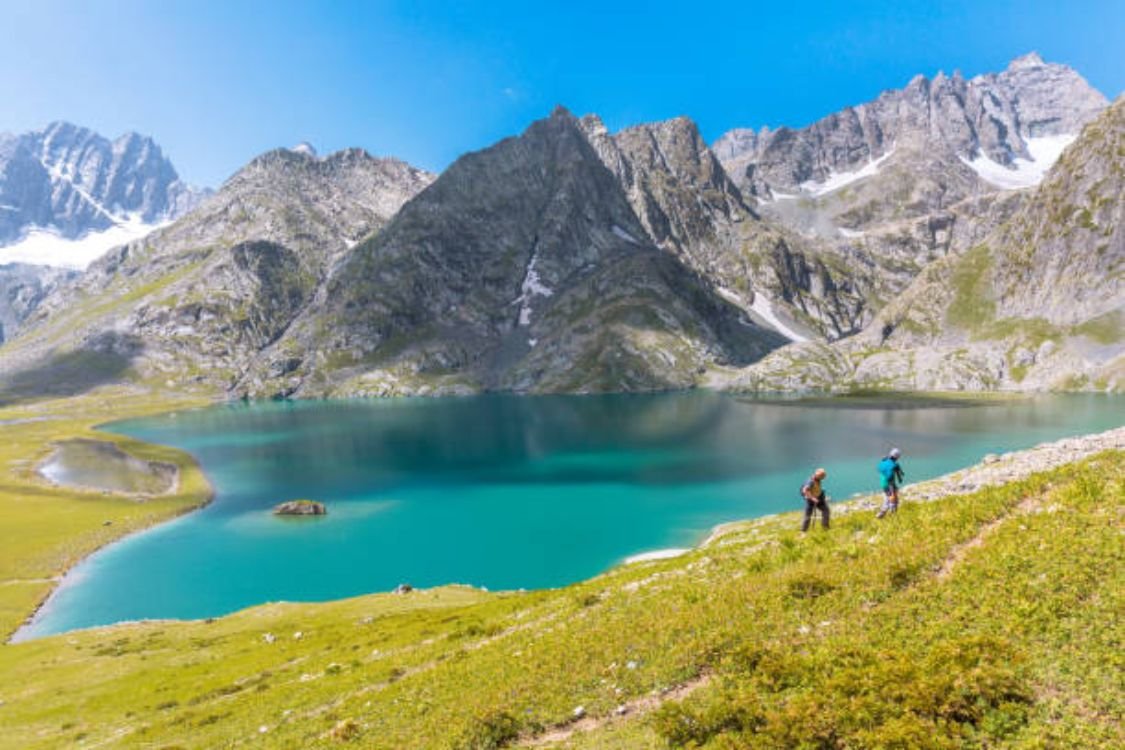
Difficulties Of Kashmir Great Lakes Trek | Himalayan Daredevils

Explore the Beautiful Valley Of Flower Trek
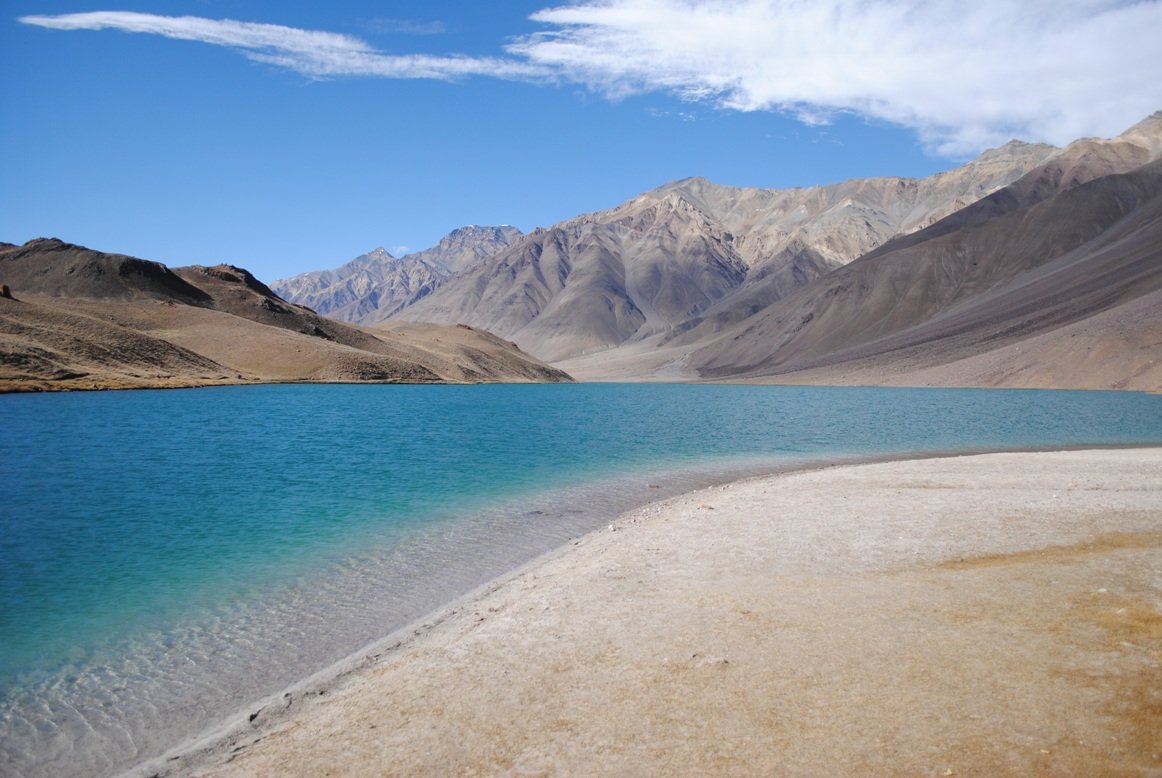
10 of the Best Himalayan Treks You Must Do

How To Choose Your First Himalayan Trek
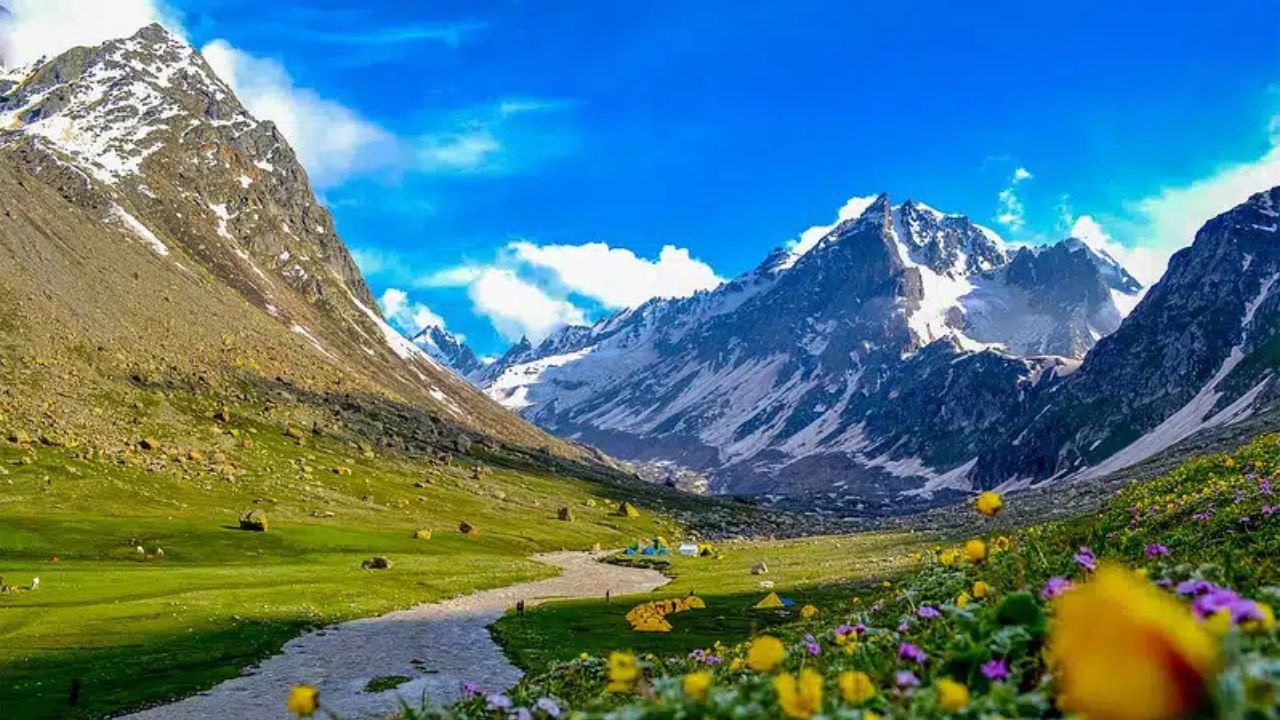
The Most Surprising Trek of Hampta Pass and Chandratal Trek
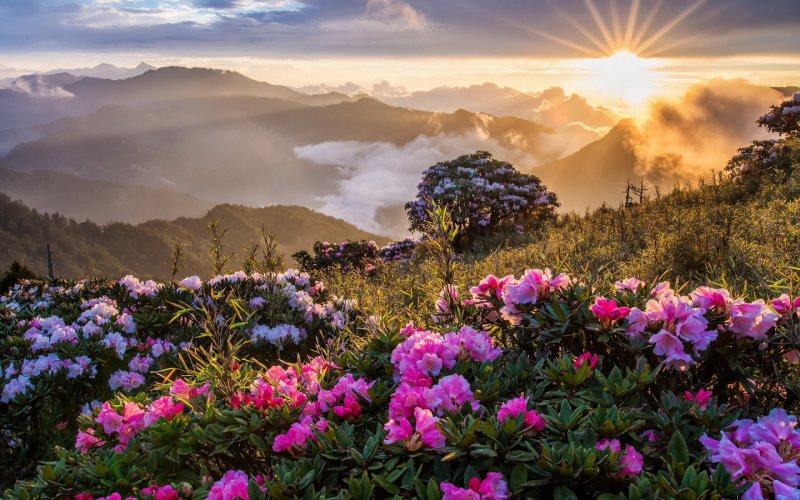
Best Time to Visit Valley of Flowers Trek
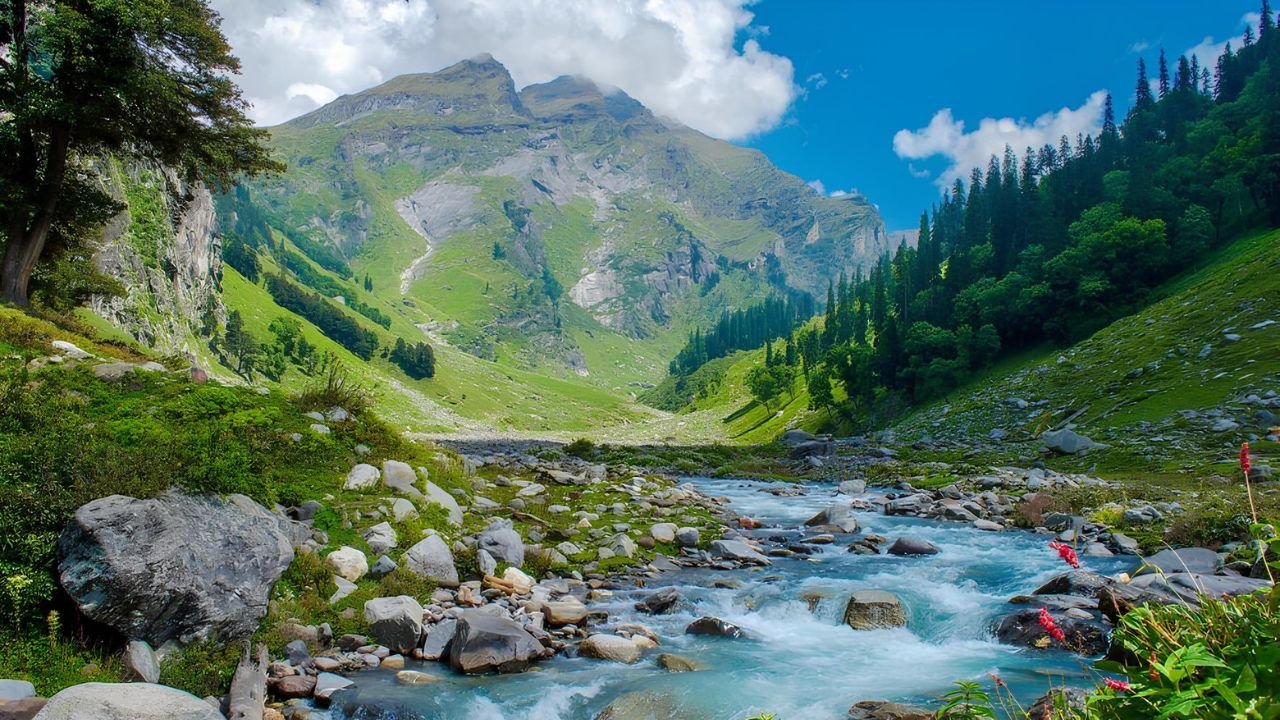
Hampta Pass Trek- Experience the Thrill of Crossing the Himalayas

